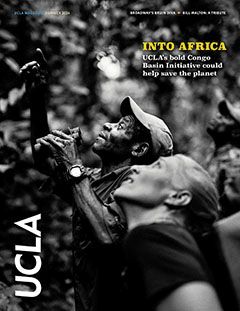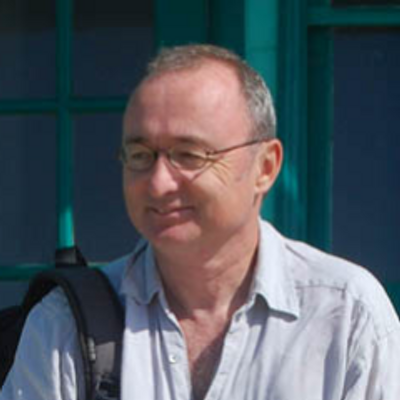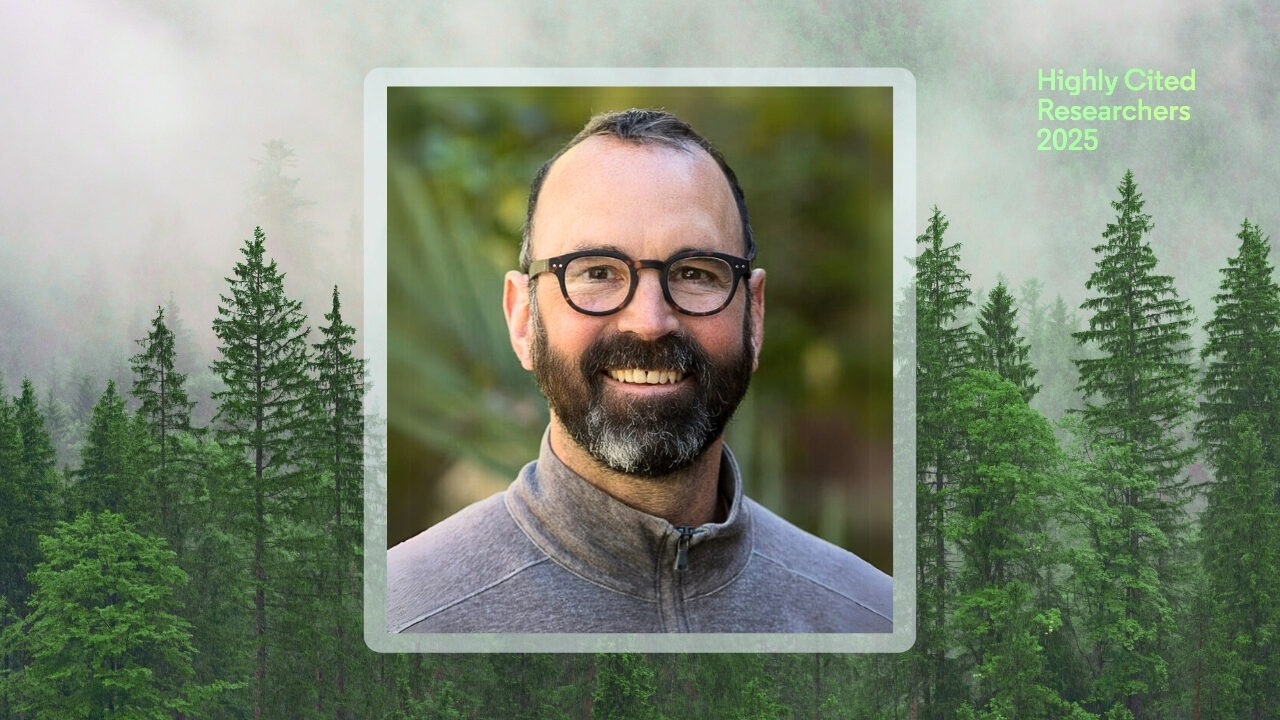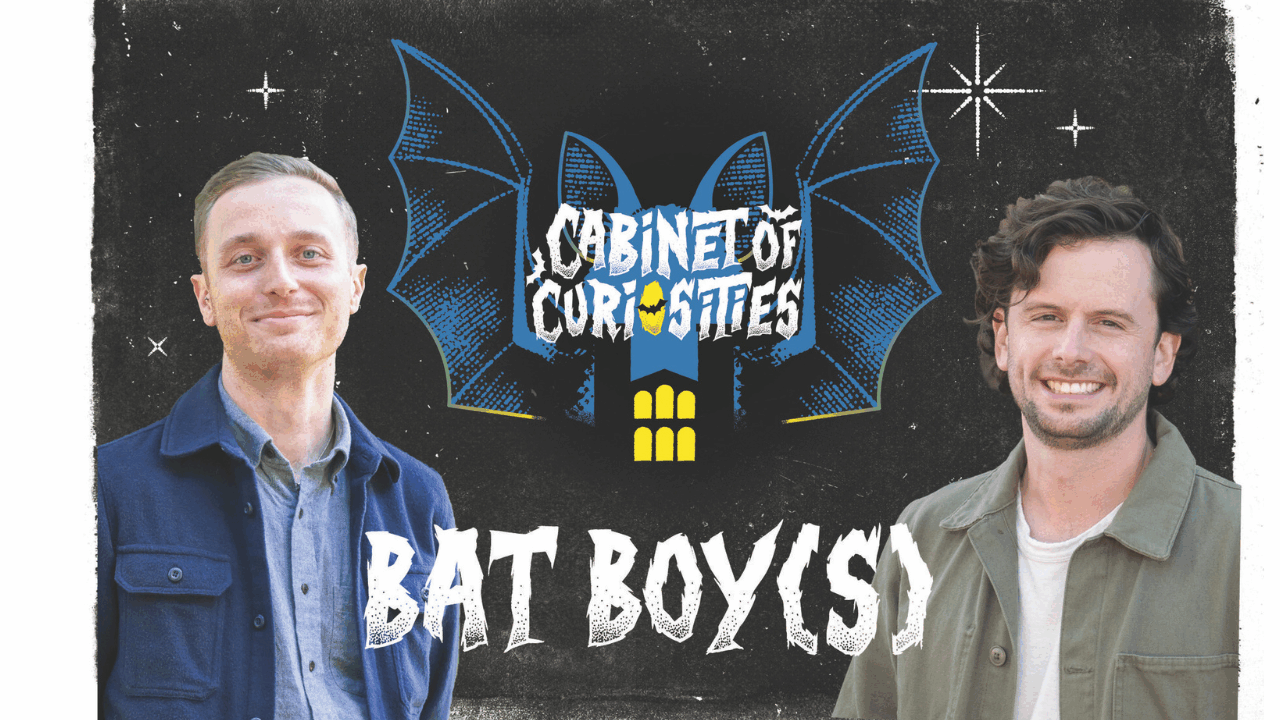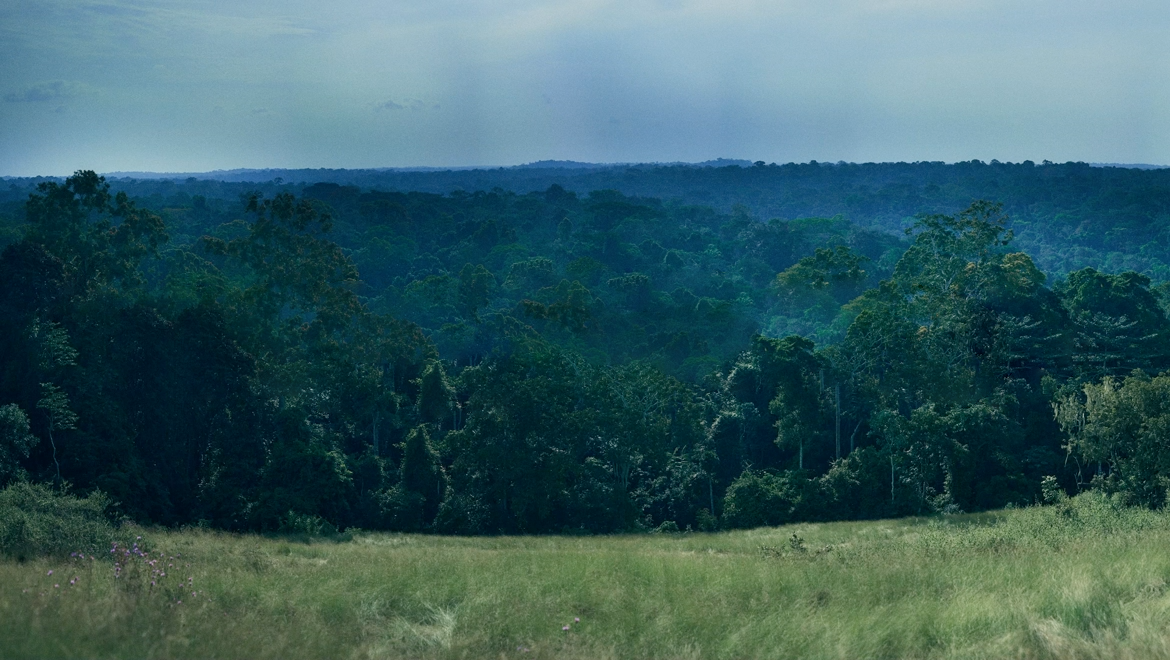
The Promise of Cameroon
UCLA’s Congo Basin Institute is out to definitively map the African rainforests, a mission that could revolutionize climate science — and just maybe save the planet.
UCLA’s Congo Basin Institute is out to definitively map the African rainforests, a mission that could revolutionize climate science — and just maybe save the planet.
The African tribal leader gazed in open bemusement at the UCLA professor. It was the early 1980s, and the academic had pitched his tent on a mosquito-clouded bank of a river, deep in the Cameroonian bush.
“So, let me get this straight, Tom,” the village chief said. “You have a nice home in America. And a lovely family. And a car, and other stuff anyone else might want. And you choose to live … like this. Why?”
It’s a question that has crossed the mind of Thomas Smith many, many times over the past 40 years, as he’s sweated through bouts of malaria and a parasitical worm infection in his eye too disturbing to be recounted. His answer is simple: This is where Smith — who wears many UCLA hats in environmental science and biology, but who prefers a battered Bruin baseball cap in the field — feels he does his best work.
That work began, oddly enough, with an interest in a Cameroonian bird. Fascinated by a red-headed finch called the black-bellied seedcracker, a favorite study for followers of Darwin for its local beak varieties, the gregarious academic came to Africa in 1983 to study it. He soon found himself involved in wider environmental, political and human rights issues.
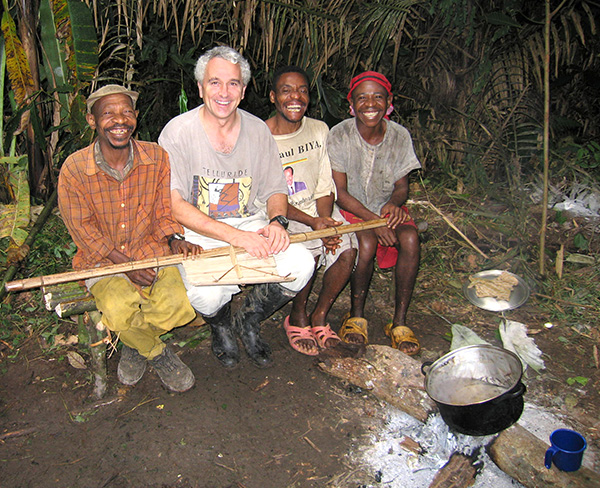
Over the decades, Smith has built productive relationships with scientists along the 3,000-mile Congo River, learning how to inspire and train African-born scientists to protect their environment. In 2015, he founded the Congo Basin Institute (CBI), the first such foreign affiliate in UCLA history. In a dramatic change from the days when scientists would basically parachute in, pursue narrow research and go home to publish, with little engagement with local scholars, CBI builds long-term professional relationships with Africans on the ground.
While Smith’s connections are spread across the continent, he has always found himself called back to Cameroon. “This is where I work with people protecting their families,” he says, “and the world.”
Cow Hooves, Peanuts and Toothbrushes
Yaoundé, Cameroon’s capital, is the very definition of African vibrancy.
It’s my first time in Africa in two decades, and I find myself overwhelmed not so much by the airport paperwork or the swampy humidity, but rather by the brutal tsunami of traffic. I know it’s a mark of prosperity of some kind, but the old city was not built for so many cars. Streets are choked and sidewalks pitted, maybe beyond repair. And it is so, so loud. I stand at an intersection and count more than 200 car horn blasts a minute, typically from oil-smoking, groaning Toyota Yaris taxis dragging their tailpipes along the ground.
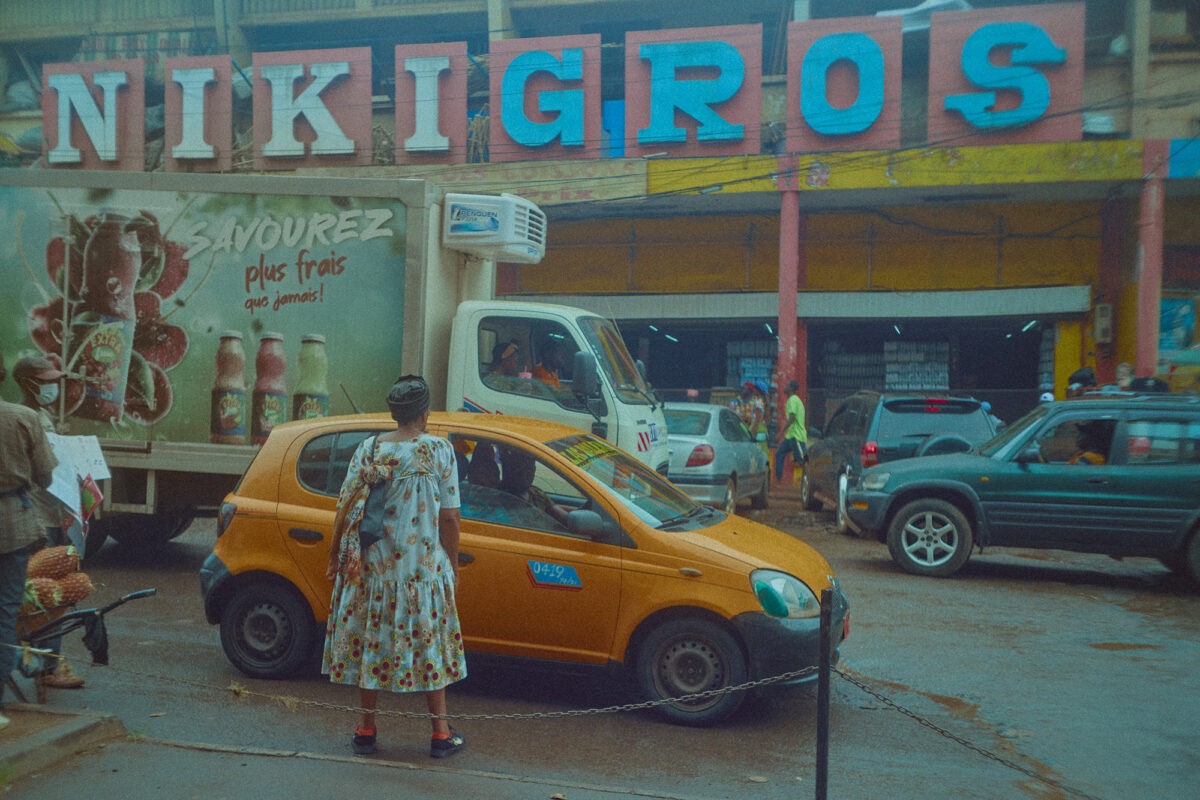
Hawkers sell cow hooves, fresh peanuts and toothbrushes, all from baskets balanced confidently on their heads, mobile convenience stores weaving in and out of the foot traffic. One proffers a single gleaming white sneaker. “I will deliver the other shoe to your hotel tonight,” he says, “if you pay now.” Yaoundé’s citizens are trés chic: businessmen sport fashionably narrow black suits, mothers swirl in pink and green taffeta, high schoolers dazzle in orange and blue.
Cameroon is a California-sized, largely Francophone nation of 27 million people and 250 languages, situated just north of the equator in western Central Africa. It’s a place of great cats and gorillas and elephants, although most people never see any of them; the animal population is shrinking, and more and more Cameroonians are now urban. The cities thrive, exuberantly. There is a healthy middle class of college-educated researchers and academics. Yet, too often, African scientists are unable to travel to Global North academic conferences due to cost and visa issues. So the CBI comes to them.
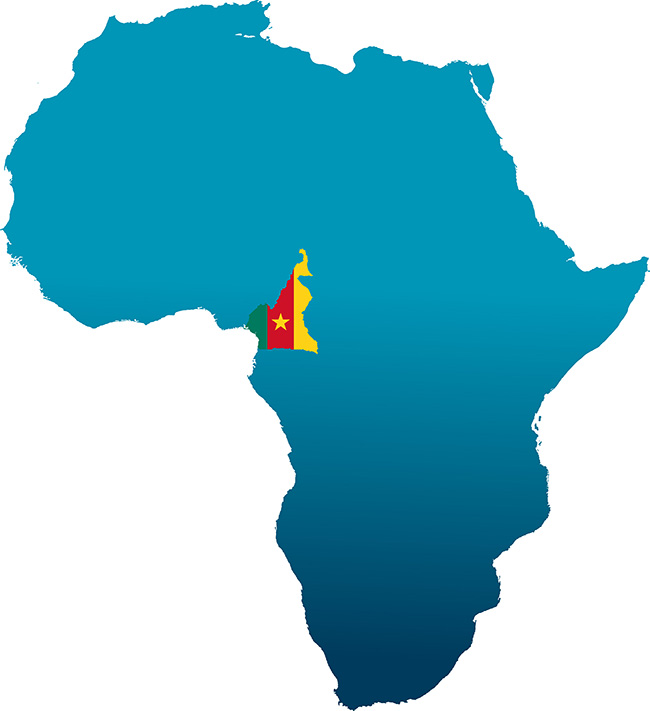
Cameroon lies at the juncture of western and central Africa. It boasts one of the most urban populations on the continent.
In his work for the CBI, Smith has enjoyed good days, such as when he and colleagues worked out a new way of balancing out the need to protect a virgin forest and to feed people from that same forest. There have also been terrible days. The idyllic beach resort of Kribi once produced extraordinary seafood; its roasted fish was famous. Smith was proud of the bird-monitoring field station he helped set up behind the sands, managed by local families, personally escorting foreign visitors there to appreciate the good work. Then, in 2017, Chinese engineers abruptly swept it all away to build a deepwater port. (They’re still selling off ancient forest land for housing.)
Right now, the most immediate challenge is to understand the overarching big picture, how all the moving parts of the ecologies of Cameroon and its neighbors along the Congo River fit together. Answering this question will help scientists plot a course that could help save humankind from looming climate disaster. Which is why, earlier this year, CBI’s new leaders flew 8,200 miles to Cameroon to meet with local scientists. And for the first time, their number did not include Tom Smith.
Introducing … PANGEA
On a sweet-scented day in February, more than a hundred African scientists, engineers and civil servants have assembled amidst the once-fashionable glory of Hotel Mont Fébé, on the lush outskirts of Yaoundé. It’s an extraordinary meeting of minds, hopes and ambitions. You can feel the excitement, the belief that change is possible. Change is also occurring at the CBI.
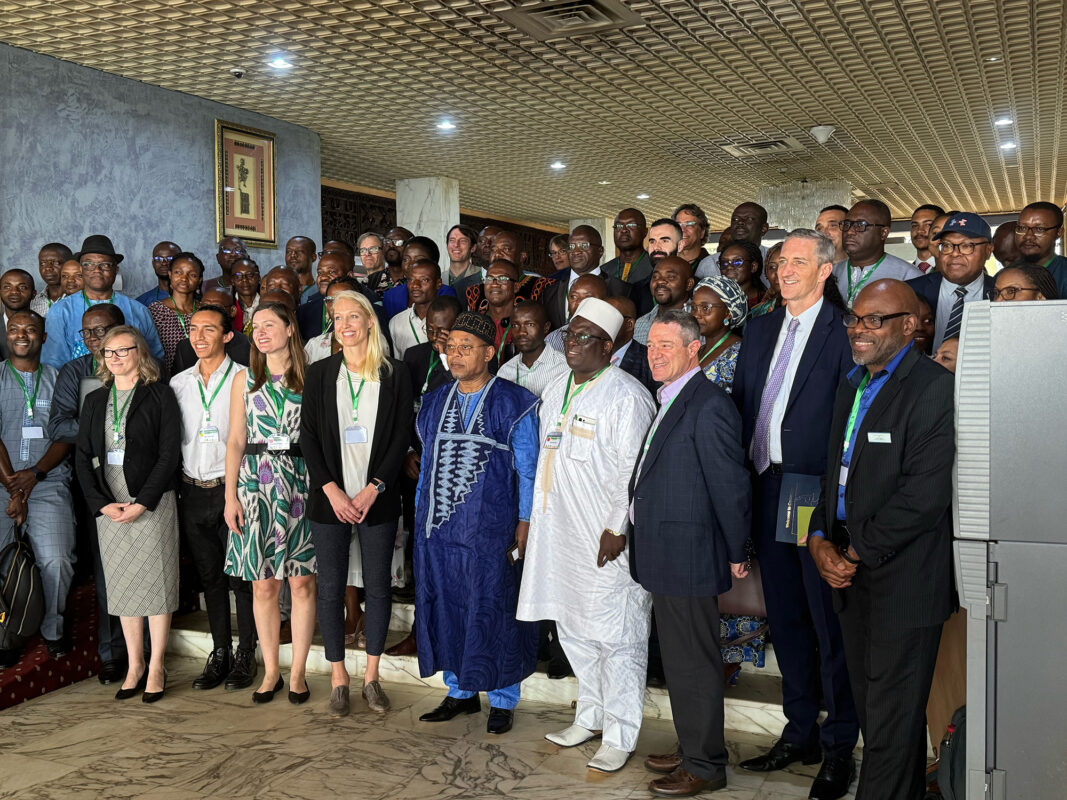
Smith remains as enthusiastic as ever, his famed battle cry “Go do it!” still fundamental to the institute’s thinking. But by not attending the meeting in Yaoundé, he is signaling his intent to hand over the reins to two recently appointed co-directors within UCLA: Colombian-born Felipe Zapata, who specializes in Latin American forestry, and Brooklyn-born Elsa Ordway, who a decade ago worked briefly with Smith in Africa. Zapata is an associate professor and Ordway an assistant professor within the UCLA Institute of the Environment & Sustainability (IoES).
Smith has stayed away with a touch of reluctance: “There are always friends to see and science to do. But I am excited to see Elsa and her team [including managing director Virginia Zaunbrecher, a corporate lawyer turned eco-warrior, and associate adjunct professor and biologist Kevin Njabo] carry the torch forward as they unveil PANGEA,” he says.
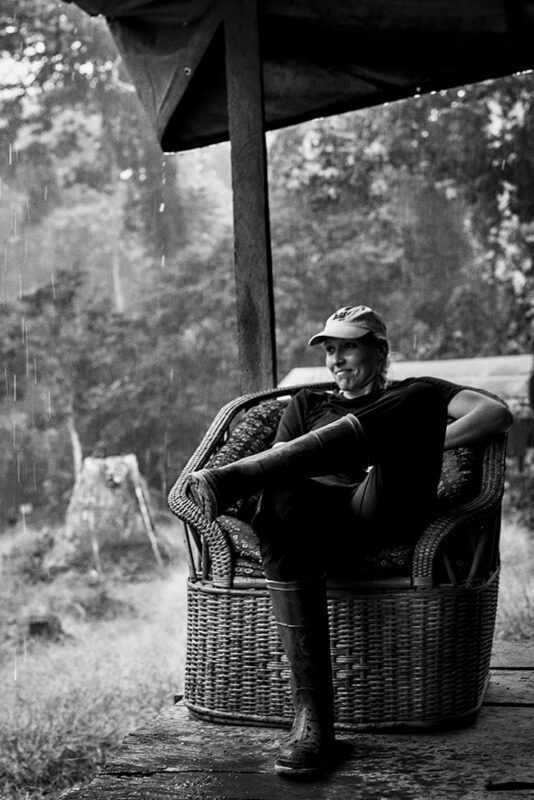
PANGEA is an audacious, 10-year plan to map the Congo River’s massive rain forest system, photographing and sampling its landscapes from forest floor to mountain top. Efforts led by UCLA researchers and funded by NASA will help lay the guidelines for work that will employ satellites, drones and an army of researchers on the ground. The project takes its name from the Pangea “supercontinent” that existed some 200 million years ago, the last global mass to unite the planet. The name encapsulates what UCLA is setting out to do in Cameroon: to remind us that we are all still tightly connected.
Over two days, Ordway and partners from NASA and the USDA Forest Service reveal the massive scope of PANGEA to scientists from around Africa, all potential colleagues in the grandest NASA-funded project so far this century.
Scientists sit in circles to outline the work: There will be field stations across the belt of the continent, some with 50-foot-high weather-monitoring towers, a reliable way of sharing data. Good science starts with counting things, and PANGEA researchers want to know how the 10-nation-spanning Congo River Basin works as a “carbon sink,” absorbing carbon dioxide; how the region is changing as a source of food for millions, most of them young; and how much forest can be turned over to agriculture before it fails as a carbon sink — and we all choke.
As an ecological system, the Congo Basin is far less understood than the planet’s other large carbon sinks — Amazonia, which was mapped by NASA satellites in the 1990s, and the forests of Southeast Asia. PANGEA will create the region’s first detailed maps, which will allow scientists to fully take stock of environmental change in this vital region of the world.
For Ordway, working out how such knowledge can be practically applied by Africans to improve African lives is the true promise behind PANGEA.
There is, however, a big “if.”
Over the next few months, Ordway and her new colleagues from the conference will create a set of proposals to be reviewed by NASA’s climate scientists at the Jet Propulsion Laboratory in Pasadena. If the proposals are selected, there could be money to launch PANGEA in the future. If further funding doesn’t materialize, Ordway says cheerfully, there are still dozens of collaborative projects to be funded individually and fleshed out over many years. “It will be slower,” she says, “but it has to happen.”
A lifetime’s work ahead with PANGEA isn’t what Ordway expected as an undergraduate juggling environmental science and African studies. But, as she took a year away from study to work in the Comoros and Madagascar, she was smitten with the African people.
“I fell in love with the community life, with the children in classrooms where I taught,” she says. “But I realized, after working with sea turtles in Equatorial Guinea, that my practical skills were inadequate. I came back from Africa to the States to learn more. This led to teaching. I did not intend to stay in academia, but I found my place at UCLA. And now, with PANGEA, I think UCLA and CBI can make a real difference.”
Tall and blonde, Ordway stands out in Yaoundé. She is patient in a local bar that declines to serve women beer or even allow them to carry their own drinks up some slight stairs. That’s all a distraction, and Ordway knows she cannot afford any.
“You listen, you learn and you go where people live to see the world from their perspective,” she says, “which is the CBI mission.”
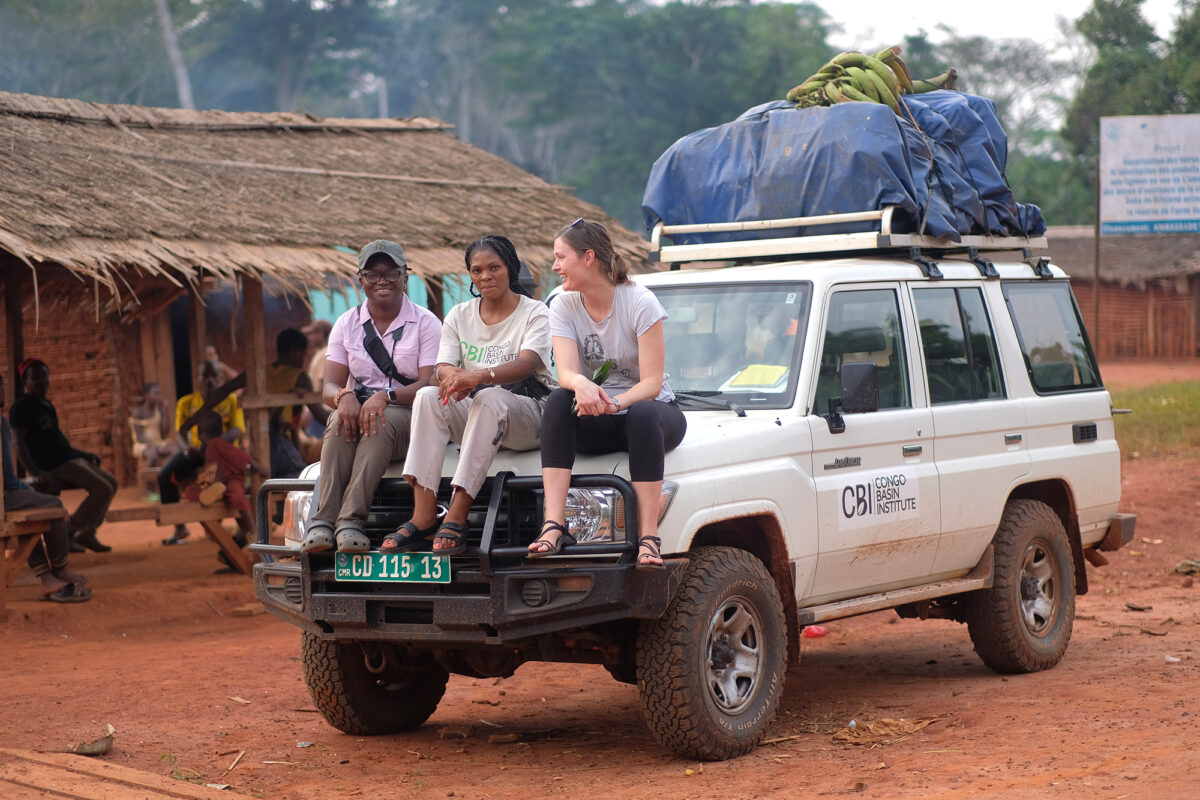
Into the Woods
I’m riding in a CBI-marked SUV, heading east past vivid street markets and police roadblocks, when we overtake a water tanker at 40 mph. There are three young bulls tethered to its roof. “How do they get up and down?” I ask, bewildered. No one seems sure.
It takes three hours of driving along a busy two-lane highway, through smoke clouds from randomly burning clumps of roadside trees, before we abruptly turn south onto a red dirt road. Another two hours of swerving around potholes, and we arrive at the edge of the Dja Faunal Reserve.
This is a UNESCO World Heritage site, 1.3 million acres of dense forest — larger than the state of Rhode Island — and home to western lowland gorillas, buffaloes and leopards.
CBI has two field stations here. Neither are as basic as Smith’s original encampment, but this is hardly safari tourism. We overnight in a bungalow in the hamlet of Somalomo, at the edge of the reserve.
A Baka family in front of a traditional hut; their child suffers from kwashiorkor (swelling of the stomach), a severe form of protein malnutrition that affects children and infants.
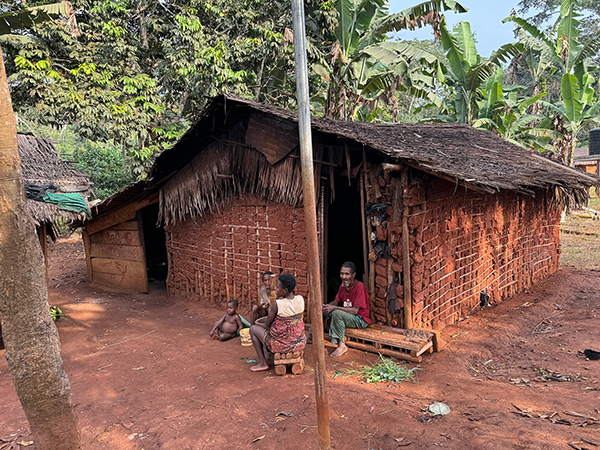
/ John Harlow
The field station is a workplace but feels like a jolly youth hostel, offering tepid water, dormitory mosquito nets, a self-flushed toilet setup and a very handsome oil portrait of Smith (a gift from a local artist). Whiskey is poured; we dutifully toast the painting before the scientists hunker down to work.
Such humid nights can be busy. Chimpanzees rarely come by Somalomo anymore, but at 3 a.m., fruit bats swoop and tiny goats crash about. (I’m warned: They’ll eat your shoes.) The most boisterous denizen is the tree hyrax, which looks like a squirrel but is related to the elephant; its ever-escalating cries are described by locals as “orgasmic.” Rappers have mixed the hyrax’s calls into 1970s recordings of saxophonist Manu Dibango to play at funeral parties.
Smith opened the Somalomo research base in 1993 as he grew closer to the Baka, the local forest nomads. They helped him understand how the ecosystem works — what to eat, what works as medicine, which plants and animals are vanishing fast. The truth is, all of them are.
Today, around 30,000 Baka live in square straw-roofed huts in communities strung along the dirt roads inside and beyond the reserve.
They face tough health and nutritional challenges that disproportionately impact young people. UCLA Fielding’s Kevin Njabo, who grew up in Cameroon, worries that imported anti-vaccine sentiment may intensify the struggle to protect children.
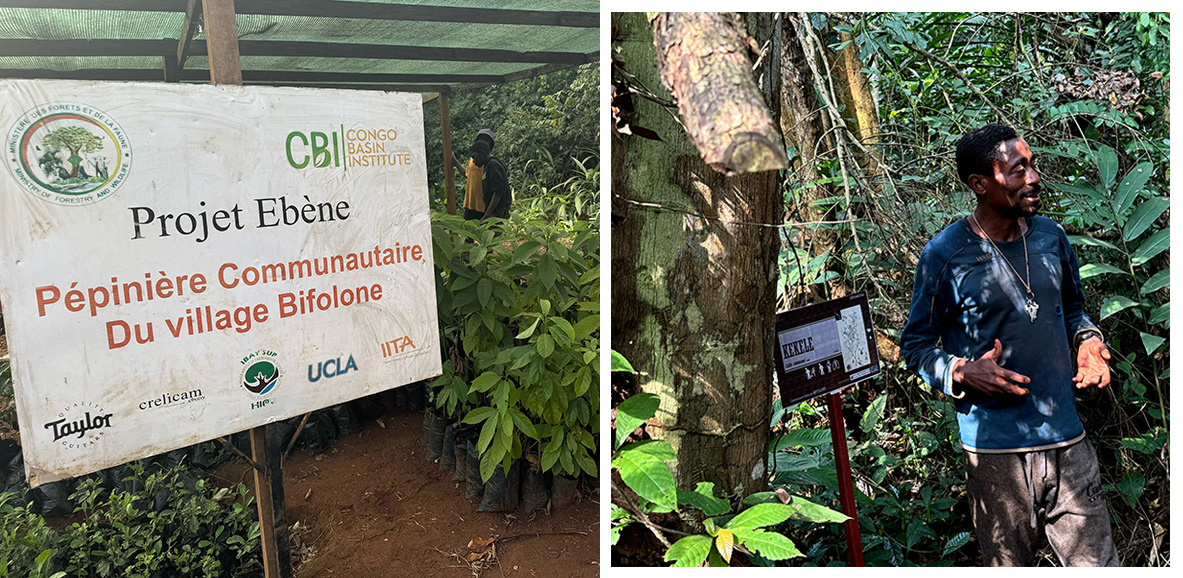
Right now, the Baka do not listen to such silliness. They relish interacting with foreigners, share their jokes, argue about soccer — there are a surprising number of Liverpool FC fans — and hope for a prosperous future for their families.
Some Baka are working on CBI’s Ebony Project, a program to replant precious hardwood trees that were plundered wholesale from forests decades ago.
The project, co-funded with Taylor Guitars of San Diego, will plant 30,000 ebony trees before 2025, as well as thousands more fruit trees. Luckily, says CBI researcher Vincent Deblauwe, the ebony matures relatively fast — maybe in 60 rather than 100 years. Some trees sell for $20,000, making them a great investment for building the local economy long term.
Near the roadside village of Bifolone, the Baka nurture ebony in nurseries near their own medicinal trees. Apart from other traditional cures the trees offer, Gaston, a Baka elder, says the stewed bark will also “send off” impotence. It must work — the villages are filled with noisy toddlers.
Take a stunning photographic journey through the life of the Baka.
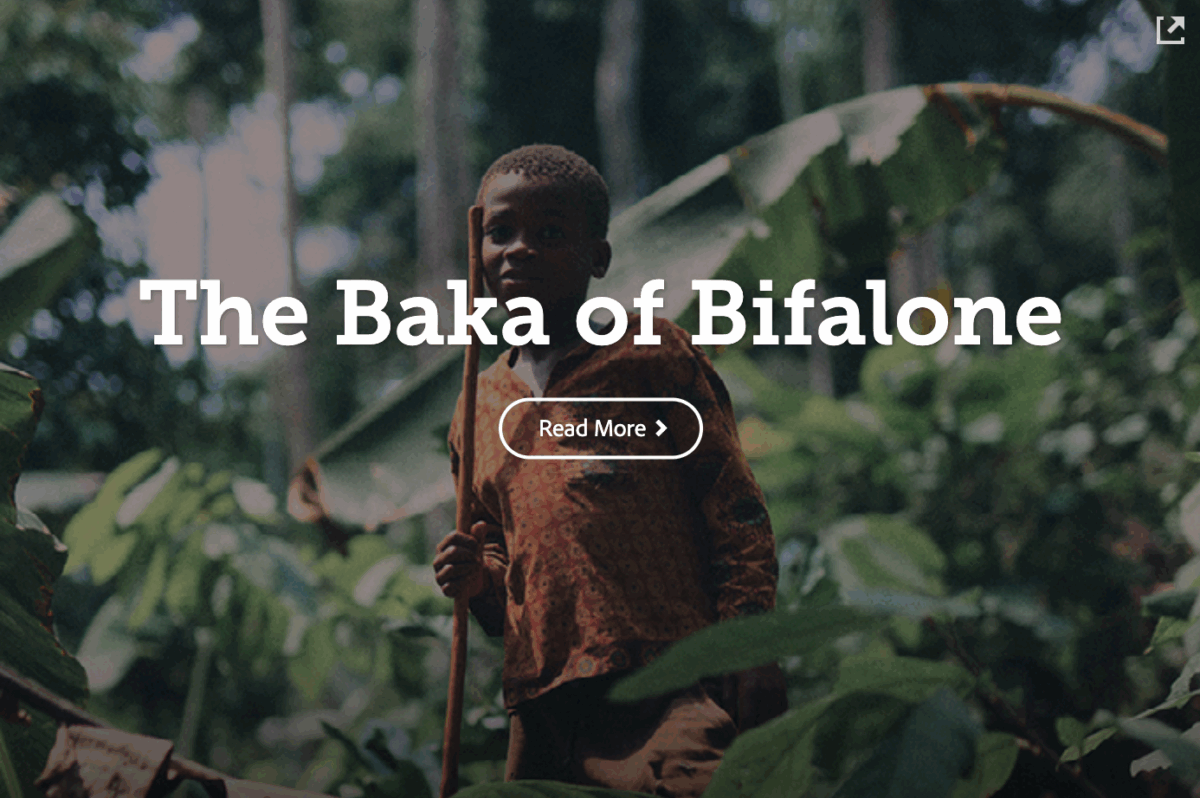
The Gift of (Local) Knowledge
The nine-hour (yes, nine-hour) hike from Somalomo through the forest reserve to the second CBI field station, Bouamir, is not for the weak-ankled. But the path through the cool green canopy is straight, flat and — with an armed guard to deter any unwelcome distractions, be they animal or human — relatively safe.
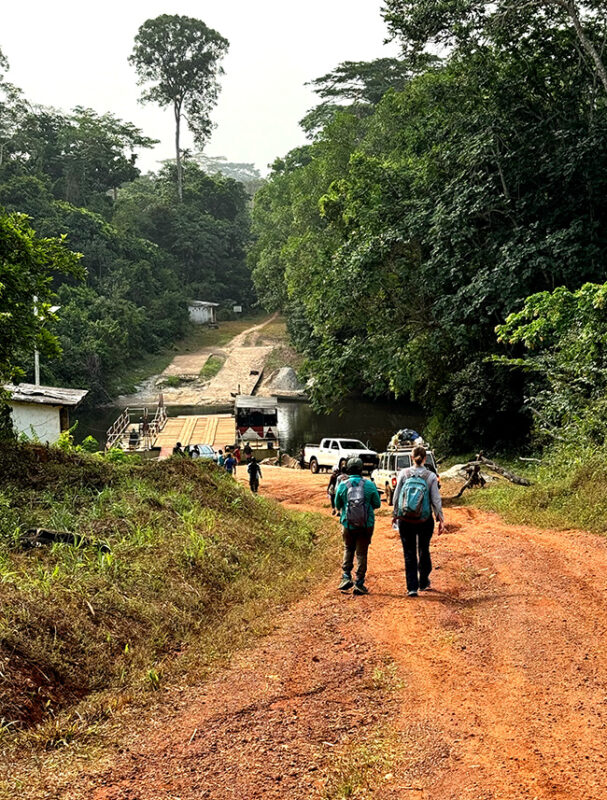
We cross a swirling brown river on a hand-cranked ferry to reach the trailhead. The crew gets busy stripping the truck of food and other essentials to be carried into the forest.
A few hours in, the hiking party grows quiet. Some seem to fall into a semihypnotic trance as they walk, while the hard-core scientists in the group note tiny changes in the fauna and flora since their last trek. The forest is always changing, says the Belgium-born Deblauwe, a postdoctoral researcher within IoES, but he says it’s grown noticeably quieter as animals and birds have disappeared.
The research platforms in the middle of the reserve are just that: open wooden structures hemmed in with mosquito nets. But the potential to carry out research in such an understudied area is catnip for climate and environmental scientists. Baka are working constantly at Bouamir on botanical and other counts, so data are always being updated. And a bonus: fewer goats. Here, it’s largely bugs, birds and monkeys greeting you in the morning.
The Baka knowledge is deep, says Iroro Tanshi, a mammal expert and winner of the 2023 UCLA Pritzker Prize’s Emerging Genius Award, bestowed annually to a global environmental innovator under age 40 who is doing exceptional work. When Tanshi, a determined and passionate advocate for the underappreciated bat, asks locals about bat populations, she usually hears about a handful of species. At Bouamir, to her delight, Baka tell her about 15 species, sketching each out in detail.
“The Baka really appreciate the creatures around them,” she marvels. “They are observant and understanding, and although I am familiar with forest and jungle, it’s well worth the trek into an extraordinary world.”
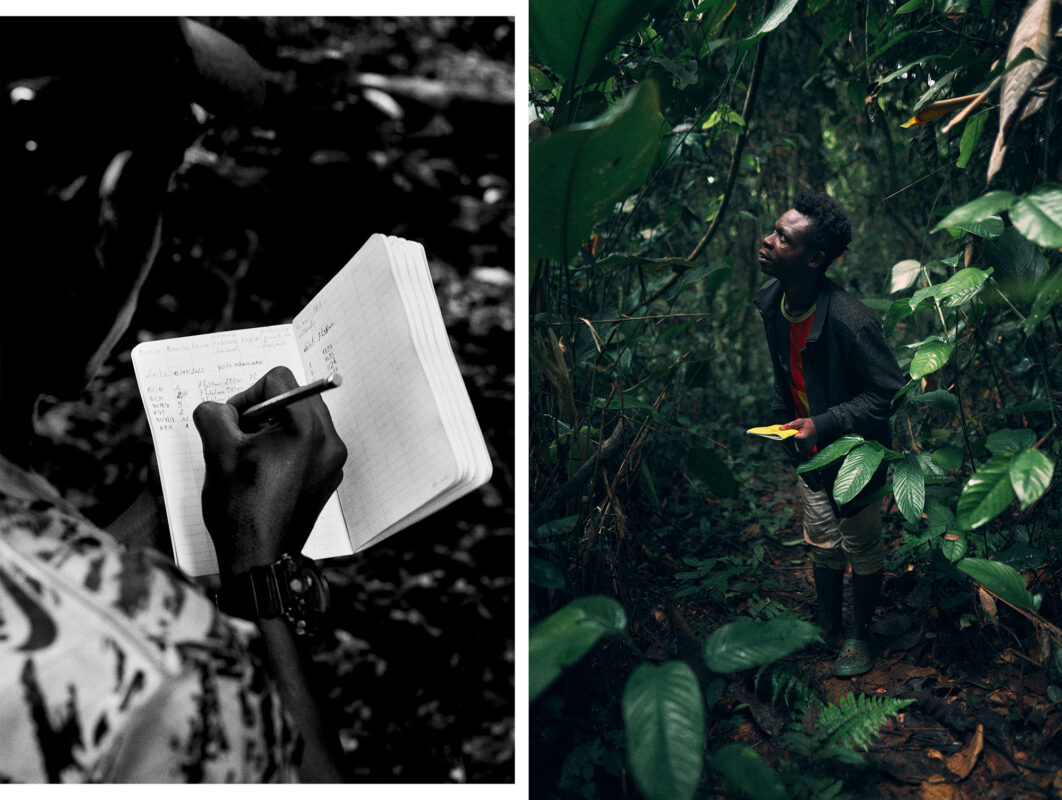
For the People and the Planet — and Tom
There is one thing, apart from science, that keeps bringing CBI leadership back to Cameroon. “It’s always the people,” says Smith.
As he steps away from a leadership role, he is hopeful about new CBI prospects such as UCLA Ph.D. candidate Hannah Stouter, an upstate New Yorker on her first trip to Africa to study climate change under Ordway. “I am just amazed by everything,” Stouter says, wide-eyed. “CBI does extraordinary work in a new way, and I want to be part of that.”
Like Stouter, CBI is looking to the future. Depending on how the funding plays out, PANGEA will either be rolled out wholesale from 2025 or in chapters over the next few years, with the potential to change our understanding of the world. The knowledge CBI and its partners collect will likely confirm Smith’s once-radical belief that the Congo Basin is a vital element of the world ecosystem. As Ordway says: Understand it, learn how to protect it and work with Africans — or risk losing the whole game for humanity.
CBI is thinking global, but it already boasts a proud legacy in Cameroon. A few miles north of Somaloma is a gendarme outpost where police check ID papers. In the yard is a mature tree known as the Tom Smith Mango.
Whether Smith actually had anything to do with its germination remains unclear. But today it offers fruit and shade to passersby, who appreciate it with the moniker that honors both CBI and UCLA. As they pick the mangoes, the Baka say, “Joku, bella, bella, Tom.”
Thank you, Tom. Good job, good job.
Photos by Clayton Boyd
Read more from UCLA Magazine’s Summer 2024 issue.
